Disclosure: This article contains affiliate links. We may earn a commission from purchases at no extra cost to you, which helps our travel content.
When I first landed in Oslo for a tax conference (of all things!), I expected another concrete jungle with suits and spreadsheets. Que surpresa maravilhosa! What a wonderful surprise to discover that this Scandinavian capital is actually an outdoor enthusiast's paradise cleverly disguised as a financial hub. Unlike most European capitals, Oslo doesn't force you to choose between urban amenities and natural wonders—it serves both on the same plate, often just a short T-bane ride apart. As someone who grew up balancing financial district life with weekend escapes to Ipanema, this city immediately felt like a kindred spirit.
Island Hopping in the Oslofjord
Growing up surfing in Rio, I've always been drawn to water, so discovering Oslo's island-hopping potential was like finding a piece of home in the North. The Oslofjord isn't technically a fjord (it's geologically a bay), but what it lacks in dramatic cliffs it makes up for with an archipelago of islands accessible via public ferries that operate as casually as city buses.
During summer months, I recommend starting with Hovedøya, just a 5-minute ferry ride from Aker Brygge. The island offers ruins of a 12th-century monastery, hidden beaches, and forest trails. Bring your quick-dry towel for impromptu swims—the compact microfiber design has saved me countless times when opportunity strikes.
For a full day adventure, island-hop to Langøyene where locals gather for barbecues and camping. The atmosphere reminds me of weekend gatherings in Brazil, minus the samba but with equally friendly vibes. If you're visiting between May and September, consider the island-hopping ticket that allows unlimited travel between islands—vale muito a pena (it's well worth it).

💡 Pro Tips
- The ferry schedule changes seasonally—download the Ruter app for real-time updates
- Island beaches get crowded on sunny weekend days; aim for weekday visits
- Pack your own food and drinks as island services are limited
Nordmarka Forest: Wilderness at Your Doorstep
If Rio taught me to love the sea, Seoul taught me to appreciate mountains. In Oslo, Nordmarka Forest satisfies that craving for elevation with over 430 square kilometers of wilderness literally connected to the city's public transport system. É inacreditável! It's unbelievable!
The T-bane (metro) line 1 takes you directly to trailheads at Frognerseteren or Sognsvann, where an extensive network of trails awaits. During winter, these same paths transform into cross-country skiing routes—a sport I awkwardly but enthusiastically attempted after a Norwegian colleague convinced me it was "just like surfing, but on snow." (It is decidedly not.)
For beginners to Nordic wilderness, I recommend the trails around Sognsvann Lake, which offer gentle terrain and clear markings. More experienced hikers should head to Vettakollen for one of the best panoramic views of Oslo. My hiking poles proved invaluable on some of the steeper sections, especially when wet.
During winter months, Nordmarka becomes a cross-country skiing paradise. Rental equipment is available at multiple locations, but if you're staying for more than a few days, consider investing in a headlamp for those early morning or late afternoon adventures when daylight is scarce.
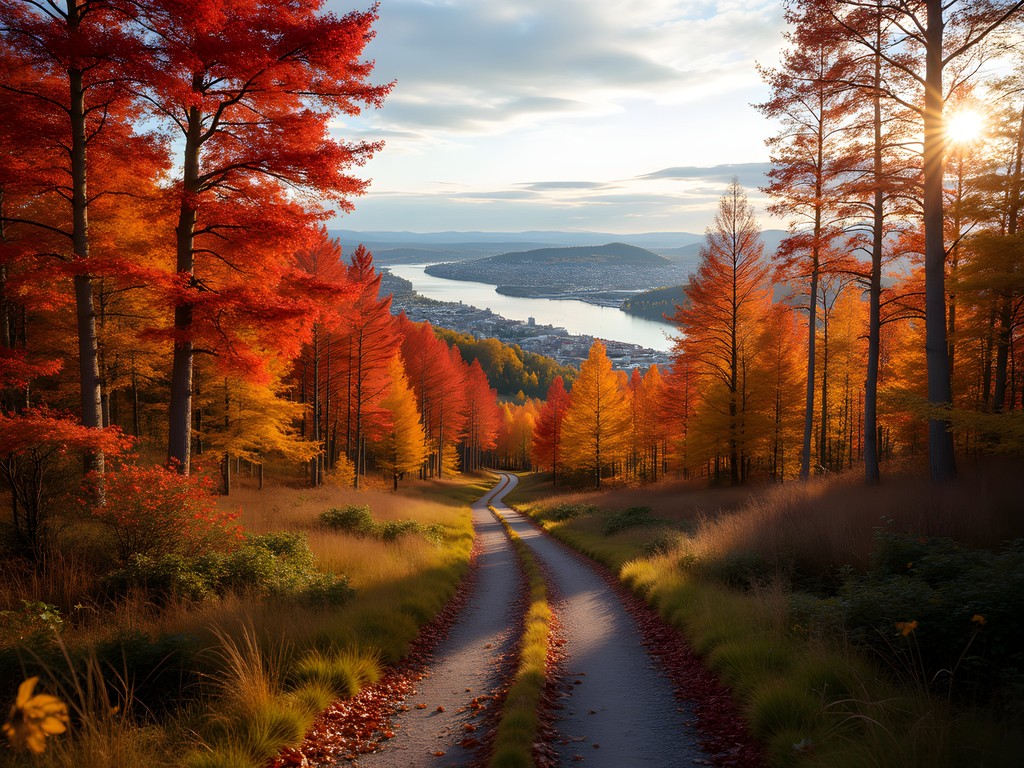
💡 Pro Tips
- Download the DNT (Norwegian Trekking Association) app for trail maps and cabin information
- Respect the Norwegian 'allemannsretten' (right to roam) by leaving no trace
- Weather changes rapidly—always pack an extra layer even on sunny days
Urban Kayaking: The City from Water Level
Having grown up where the ocean meets the city, I'm always drawn to urban waterways. Oslo's relationship with water is different from Rio's dramatic coastline or Seoul's carefully managed Cheonggyecheon Stream—it's more integrated, more accessible, more... Norwegian.
Renting a kayak from one of the operators along Aker Brygge or Sørenga gives you a unique perspective of Oslo's rapid architectural transformation. Paddling past the iconic Opera House, the Barcode Project, and the futuristic Munch Museum offers views you simply can't get from land. For the more adventurous, kayaking to nearby islands like Nakholmen or Bleikøya provides a perfect half-day escape.
My first Oslo kayaking experience happened during a surprisingly warm May evening, when the sun barely set and the water reflected the city lights like a mirror. I've since learned that bringing a dry bag is essential for protecting electronics and documents—especially important when you're a tax advisor who can't resist checking emails even while paddling!
For beginners, I recommend joining one of the guided sunset tours that combine urban paddling with storytelling about Oslo's maritime history. More experienced kayakers can rent equipment for independent exploration. Either way, seeing Oslo from water level provides a perspective that even many locals haven't experienced.
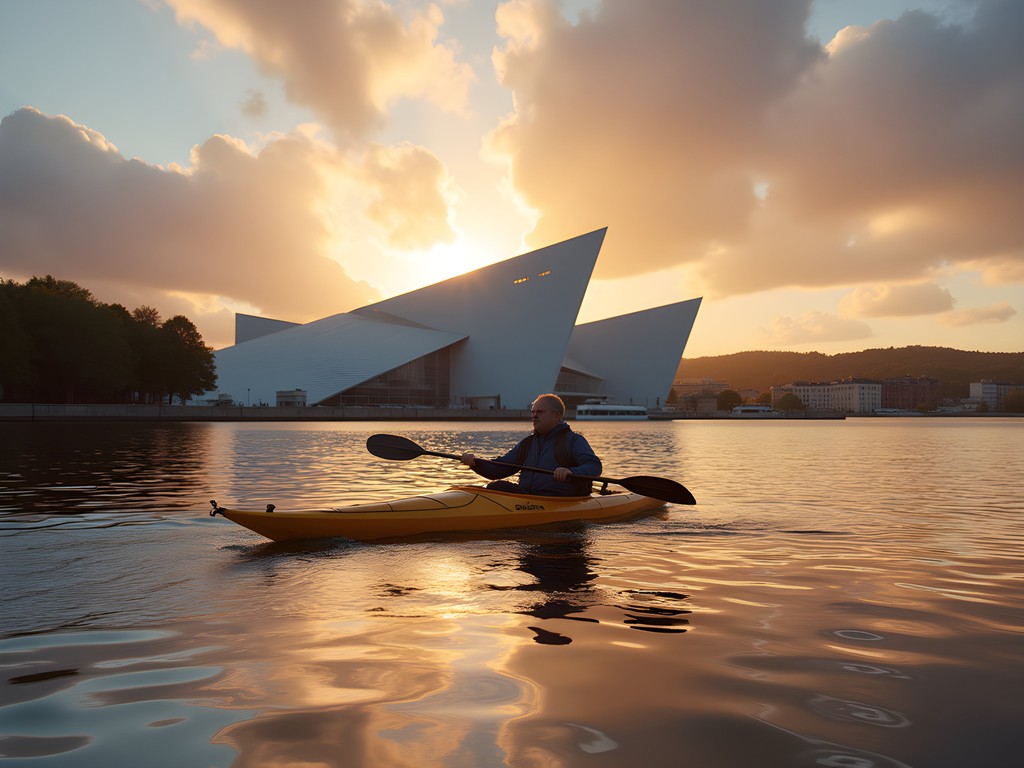
💡 Pro Tips
- Book kayak rentals in advance during summer months
- Bring a change of clothes in a waterproof container—Norwegian water is cold year-round
- Check wind conditions before heading out—the fjord can get choppy unexpectedly
Ekeberg Sculpture Park: Art Meets Nature
As someone who spends workdays immersed in tax codes and spreadsheets, I've developed a particular appreciation for spaces that blend creativity with natural settings. Ekeberg Sculpture Park (Ekebergparken) is precisely this kind of sanctuary—a 25-acre woodland filled with world-class sculptures just a short tram ride from central Oslo.
The park features works by renowned artists like Salvador Dalí, Louise Bourgeois, and James Turrell, thoughtfully placed among trees and clearings with spectacular views over the city and fjord. What makes this experience special is how the art interacts with the changing seasons—a sculpture partially hidden by summer foliage reveals itself completely in winter, creating an ever-evolving outdoor gallery.
My favorite time to visit is early morning when the light is soft and the crowds are thin. I've found that bringing a insulated water bottle keeps my coffee hot during these morning art walks—essential for those crisp Norwegian mornings when temperatures hover just above freezing.
Don't miss James Turrell's "Skyspace" installation, which plays with your perception of the sky through a carefully designed viewing chamber. It reminds me of looking up at the sky between Rio's skyscrapers as a child, but with an artist's deliberate framing.

💡 Pro Tips
- Download the free Ekeberg Sculpture Park app for guided tours and artist information
- Visit at different times of day—the sculptures transform dramatically with changing light
- Combine with a meal at the historic Ekeberg Restaurant for panoramic city views
Akerselva River Walk: Industrial Heritage Meets Urban Nature
The Akerselva River slices through Oslo like a green artery, offering an 8-kilometer walking path from Maridalsvannet Lake to the city center. As someone who appreciates the intersection of industrial heritage and nature (a surprisingly common theme in both Rio and Seoul), this river walk quickly became my favorite urban escape during busy workweeks.
The river powered Oslo's industrial revolution, and the path takes you past converted factory buildings, thundering waterfalls, and trendy neighborhoods like Grünerløkka. What impresses me most is how Norwegians have preserved industrial elements while allowing nature to reclaim spaces—um equilíbrio perfeito (a perfect balance) that many cities could learn from.
I often start my walks at Nydalen (easily reached by metro) and head downstream toward the city center. The trail running shoes I originally bought for Seoul's mountain paths have proven perfect for navigating the occasionally muddy and uneven terrain along the river.
During summer months, locals gather along the banks for picnics and swimming at spots like Badebakken. In autumn, the riverside explodes with color as leaves change, creating a spectacle that rivals any formal garden. Winter brings its own magic when snow blankets the path and waterfalls partially freeze.

💡 Pro Tips
- Visit the Norwegian Museum of Science and Technology along the route to understand the river's industrial importance
- Look for salmon swimming upstream during migration season (June-October)
- The cafés at Hønse-Lovisas Hus and Mathallen food hall offer perfect rest stops
Final Thoughts
Oslo's seamless blend of urban sophistication and accessible wilderness makes it uniquely positioned among European capitals. As someone who has lived in cities that either embrace nature (Rio) or meticulously design it (Seoul), I find Oslo's approach refreshingly straightforward—nature isn't an amenity here, it's a birthright.
What continues to amaze me about this city is how quickly you can transition from boardroom to boardwalk, from financial district to forest trail. For solo travelers especially, this accessibility creates endless opportunities for spontaneous adventures without complex logistics or transportation headaches.
The Norwegian concept of friluftsliv—a commitment to outdoor life regardless of weather—has taught me to see urban environments differently. Now when I travel to other cities for work, I find myself searching for their hidden pockets of wilderness, their own versions of Oslo's urban nature.
So pack your layers (yes, even in summer), download the city's excellent transportation app, and prepare to discover why Norwegians consistently rank among the world's happiest people. A natureza está esperando—nature is waiting—just minutes from your hotel doorstep.
✨ Key Takeaways
- Oslo offers wilderness experiences accessible by public transportation
- The city's outdoor spaces can be enjoyed year-round with proper preparation
- Solo travelers can easily navigate between urban amenities and natural settings
- The Oslo Pass includes public transportation and ferry access to nearby islands
- Norwegian weather changes rapidly—always dress in layers
📋 Practical Information
Best Time to Visit
May-September for warmest weather; December-March for winter activities
Budget Estimate
$100-150 USD per day including accommodations, food and activities
Recommended Duration
4-7 days
Difficulty Level
Moderate


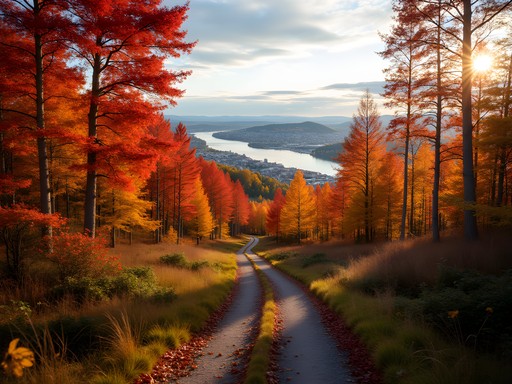


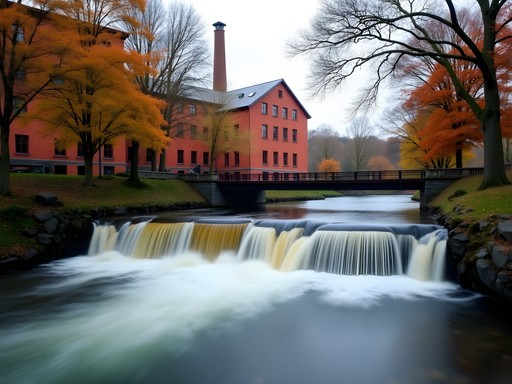


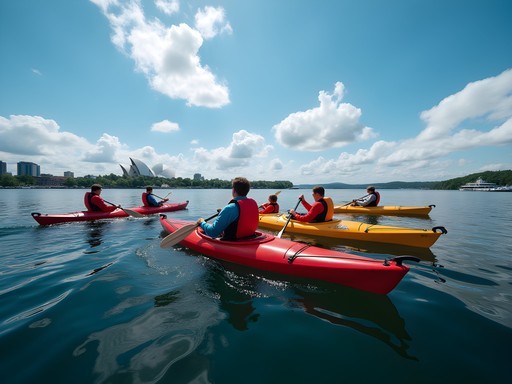
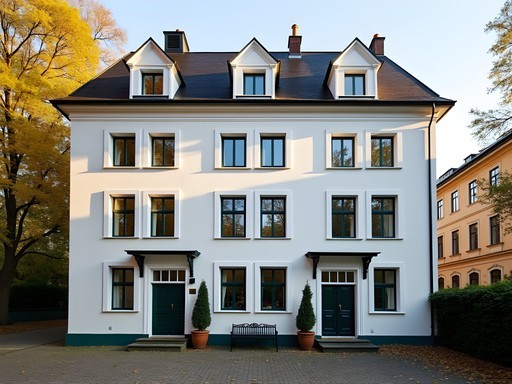




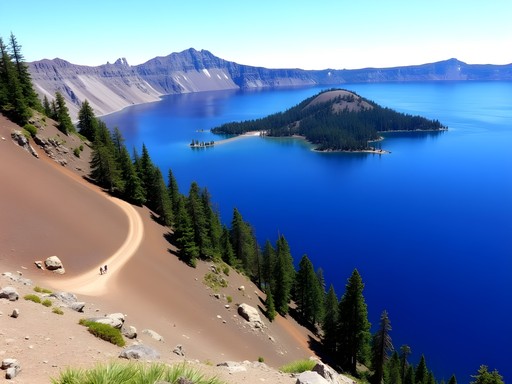

Comments
HikingEnthusiast
Just got back from Oslo and did most of these! Quick tip for Nordmarka: download the DNT (Norwegian Trekking Association) app before you go. It shows all the marked trails and cabins. We used our hiking poles which were super helpful for some of the steeper sections near Sognsvann.
wanderlustway
I'm planning my first trip to Oslo for April! Would the kayaking be too cold then? Also wondering if the ferries to the islands run year-round?
Luca Evans
April can be chilly for kayaking (around 5-10°C), but many operators provide wetsuits! As for ferries, they run year-round but with reduced schedules in winter. By April you should have good options. Hovedøya is especially nice in spring when the wildflowers start blooming!
wanderlustway
Thanks so much! I'll pack some extra layers just in case. Really looking forward to seeing those spring flowers!
NordicTraveler55
Great post! The island hopping looks amazing!
Douglas Bradley
Luca, your post really captures what makes Oslo special! I visited last summer and was equally surprised by how accessible the wilderness is. Nordmarka Forest was a highlight - I hiked from Frognerseteren to Ullevålseter and the trail system is remarkably well-maintained. One thing I'd add for readers: consider the T-bane (metro) + Oslo Pass combo if you're planning to explore multiple areas. It makes hopping between the city center and these nature spots incredibly efficient. The sculpture park was another gem - the juxtaposition of modern art against those panoramic fjord views is something I haven't experienced elsewhere in Europe.
wanderlustway
Was it crowded when you went to Nordmarka? Thinking of going in May but worried about tourist crowds.
Douglas Bradley
Even in peak summer (July), Nordmarka was surprisingly uncrowded! Once you get about 20 minutes into the forest, people really spread out. May should be perfect - fewer tourists and the spring colors will be beautiful.
wanderlustway
That's super helpful, thanks! Definitely adding it to my itinerary now 😊
George Hayes
This post brings back such great memories! We visited Oslo with our kids (8 & 10) last summer and were blown away by how easy it was to access nature. The public transportation system is incredible - we just bought the 7-day passes and used them for everything including the ferry to the islands. The kids loved Ekeberg Sculpture Park - the interactive art pieces kept them entertained while my wife and I enjoyed the views. One tip: if you're hiking in Nordmarka, stop at Ullevålseter for their amazing waffles with brown cheese. My son still talks about them! Oslo really changed my perspective on what a city break can be with kids.
vacationmood
Those waffles sound amazing! I missed that spot. Did you need to book anything in advance or were most activities pretty accessible without reservations?
George Hayes
Most things didn't need booking! The only thing we reserved was kayaking since we wanted a guided tour. Everything else - ferries, museums, hiking - was super accessible. Just show up and enjoy!
cityclimber
Great post! I'm planning a trip to Oslo in January. Are these outdoor activities still doable in winter? Especially interested in the Nordmarka Forest trails.
Luca Evans
Absolutely! Winter in Nordmarka is magical - the trails transform for cross-country skiing (you can rent gear at Frognerseteren). The T-bane takes you right to the trailheads. The islands are quieter but still accessible, though kayaking might be chilly unless you're properly equipped. Bundle up with good layers - I use my merino base layers when hiking there in winter. The sculpture park is beautiful with snow too!
cityclimber
Thanks so much! I'm excited about trying cross-country skiing. Do you recommend any specific trails for beginners?
George Hayes
Not Luca, but when we visited last winter, we started at Frognerseteren and took the beginner trails around Tryvann. They're well-marked and not too challenging. The ski rental place there has really patient staff who gave our kids a quick lesson!
luckypro
Great post! Anyone done the winter activities in Oslo? Planning a December trip and wondering if the urban wilderness is still accessible with snow.
Luca Evans
Winter is magical in Oslo! Nordmarka becomes a cross-country skiing paradise with lit trails for evening skiing. The islands are less accessible, but the forests come alive with winter activities. Oslo Winter Park for downhill skiing is just 30 mins from downtown by metro. Locals embrace winter fully!
vacationmood
Wow, this post hits different! Just got back from Oslo last month and totally fell in love with how easy it was to escape the city. We did the island hopping thing in the Oslofjord and it was AMAZING! Just hop on a ferry with your regular transit pass and boom - you're in paradise. Hovedøya was our fave - those monastery ruins are so cool and we had a little picnic on the beach. Didn't try the kayaking though, kinda regretting that now!
George Hayes
The island hopping was our family's highlight too! My kids still talk about swimming at Langøyene. If you go back, definitely try kayaking - we rented from the place near Opera House and paddled around the fjord islands. Magical evening!
vacationmood
Thanks for the tip! Definitely putting kayaking on the list for next time!
journeybuddy
This post convinced me to add an extra day to my Oslo itinerary next month! I was just going to do museums and architecture, but that Ekeberg Sculpture Park looks amazing. Does anyone know if it's easily reachable by public transport?
luckypro
Super easy! Tram #19 takes you right there. It's about 10 mins from central station. The views over the city are incredible too!
Marco Suzuki
Excellent breakdown of Oslo's outdoor offerings! Having visited 3 times now (twice solo), I'd add that the accessibility factor cannot be overstated. The public transport system is remarkably efficient - I timed it once and was from city center to hiking in Nordmarka in exactly 19 minutes. For those concerned about costs (Oslo isn't cheap), many of these activities are free or low-cost. The sculpture parks especially offer tremendous value. One tip: the Oslo Pass includes public transport AND ferry access to the islands, making it quite economical if you're planning to explore extensively. The forest cabins (DNT huts) are another unique feature - where else can you hike to a cabin serving waffles in the middle of a city's forest?
Venture X
Premium card with 2X miles, $300 travel credit, Priority Pass